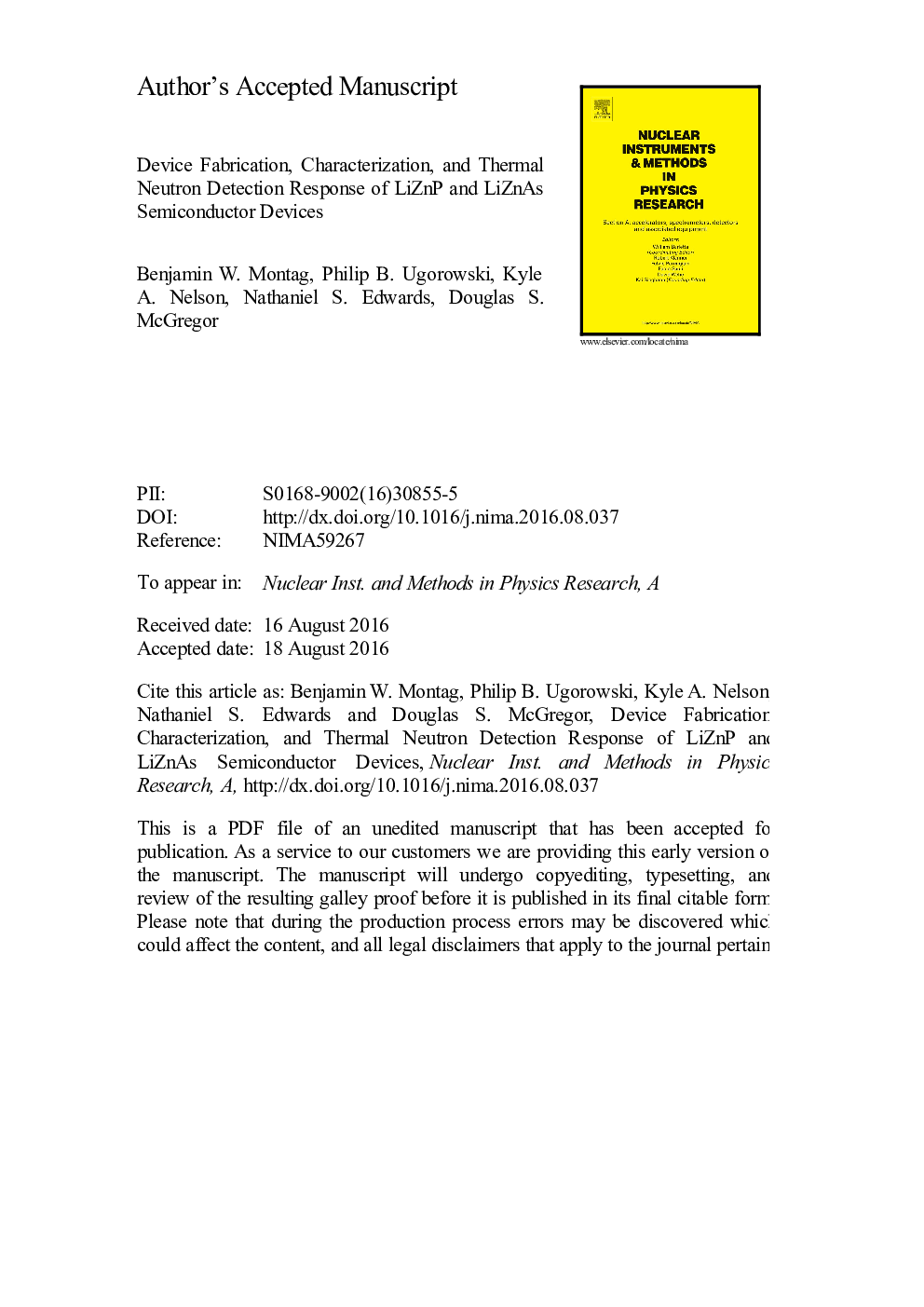| Article ID | Journal | Published Year | Pages | File Type |
|---|---|---|---|---|
| 8168140 | Nuclear Instruments and Methods in Physics Research Section A: Accelerators, Spectrometers, Detectors and Associated Equipment | 2016 | 20 Pages |
Abstract
Nowotny-Juza compounds continue to be explored as candidates for solid-state neutron detectors. Such a device would have greater efficiency, in a compact form, than present day gas-filled 3He and 10BF3 detectors. The 6Li(n,t)4He reaction yields a total Q-value of 4.78 MeV, larger than 10B, an energy easily identified above background radiations. Hence, devices fabricated from semiconductor compounds having either natural Li (nominally 7.5% 6Li) or enriched 6Li (usually 95% 6Li) as constituent atoms may provide a material for compact high efficiency neutron detectors. Starting material was synthesized by preparing equimolar portions of Li, Zn, and As sealed under vacuum (10â6 Torr) in quartz ampoules lined with boron nitride and subsequently reacted in a compounding furnace [1]. The raw synthesized material indicated the presence high impurity levels (material and electrical property characterizations). A static vacuum sublimation in quartz was performed to help purify the synthesized material [2], [3]. Bulk crystalline samples were grown from the purified material [4], [5]. Samples were cut using a diamond wire saw, and processed into devices. Bulk resistivity was determined from I-V curve measurements, ranging from 106-1011 Ω cm. Devices were characterized for sensitivity to 5.48 MeV alpha particles, 337 nm laser light, and neutron sensitivity in a thermal neutron diffracted beam at the Kansas State University TRIGA Mark II nuclear reactor. Thermal neutron reaction product charge induction was measured with a LiZnP device, and the reaction product spectral response was observed.
Related Topics
Physical Sciences and Engineering
Physics and Astronomy
Instrumentation
Authors
Benjamin W. Montag, Philip B. Ugorowski, Kyle A. Nelson, Nathaniel S. Edwards, Douglas S. McGregor,
